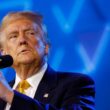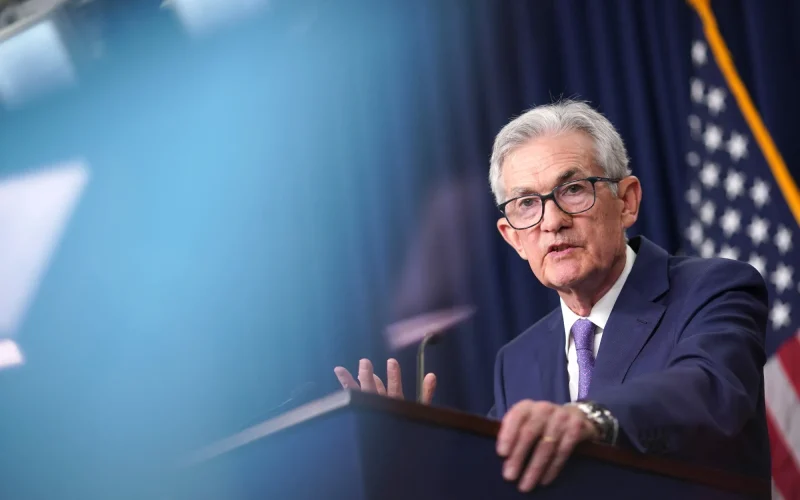Jay Powell Asserts Federal Reserve in No ‘Hurry’ to Lower Interest Rates Further
Federal Reserve Chair Jerome “Jay” Powell recently emphasized that the Federal Reserve remains cautious about reducing interest rates, signaling that the central bank intends to maintain its current monetary stance for the foreseeable future. Powell’s remarks, delivered during a high-profile event attended by financial leaders and economists, underscore the Fed’s commitment to stabilizing inflation while fostering sustainable economic growth.
The decision to hold off on rate cuts reflects the Federal Reserve’s delicate balancing act in navigating an economic landscape fraught with challenges ranging from persistent inflationary pressures to global geopolitical uncertainties. Powell’s comments offer critical insights into the Fed’s policy trajectory as the U.S. economy seeks to consolidate gains from previous interventions.

The Context: A Resilient U.S. Economy
The U.S. economy has shown remarkable resilience over the past year, surprising analysts with stronger-than-expected growth amid a challenging global environment. The third-quarter GDP growth rate of 4.9% (annualized) exceeded forecasts, buoyed by robust consumer spending, a tight labor market, and improving supply chain conditions. These factors have given policymakers more room to maneuver without rushing to ease monetary conditions.
However, Powell cautioned that this strength does not necessarily translate in
Current Monetary Policy: A Pause with Vigilance
The Federal Reserve has kept the federal funds rate in the range of 5.25% to 5.50% following its recent meetings, pausing after a rapid series of increases since early 2022. These rate hikes—totaling over 500 basis points—were enacted to combat inflation that surged to multi-decade highs in the wake of pandemic-era fiscal stimulus, supply chain disruptions, and rising energy prices.
While inflation has moderated significantly since its peak of 9.1% in June 2022, core inflation (which excludes volatile food and energy prices) remains stubbornly above the 2% target. In his remarks, Powell acknowledged this progress but emphasized that the Fed must remain vigilant.
“We have made meaningful progress in bringing inflation down. However, it is too soon to declare victory,” Powell stated, highlighting the risk of premature policy easing potentially reigniting inflationary pressures.
to a green light for rate cuts. Instead, he reiterated the Federal Reserve’s data-dependent approach, which seeks to ensure inflation remains anchored at the central bank’s long-term target of 2%.
Market Reactions: A Steady Hand Calms Volatility
Powell’s tone was measured, signaling stability to financial markets. Investors have been closely monitoring the Federal Reserve’s messaging, particularly as speculation about potential rate cuts in 2024 has gained momentum. Following Powell’s comments, equity markets showed modest gains, while bond yields remained relatively stable, reflecting a consensus that the Fed’s cautious approach would likely persist into the next year.
The Federal Reserve’s stance also affects global financial conditions, as the U.S. dollar and Treasury yields influence borrowing costs worldwide. By refraining from signaling imminent rate cuts, Powell appears intent on avoiding unintended market volatility or speculative excesses.
The Labor Market Conundrum
One of the key variables in the Federal Reserve’s decision-making process is the state of the labor market. The U.S. unemployment rate remains near historic lows at 3.9%, underscoring the resilience of the job market despite higher borrowing costs. However, Powell noted that wage growth, while moderating, remains elevated, posing a potential risk to price stability.
The Fed Chair highlighted the importance of maintaining a balanced labor market where wage growth aligns with productivity gains. While some sectors, such as technology, have experienced layoffs and hiring slowdowns, others—like healthcare and hospitality—continue to face labor shortages, adding complexity to the Fed’s outlook.
Challenges Ahead: Global Risks and Domestic Uncertainties
Powell’s cautious tone also reflects a recognition of the challenges facing the global economy. Geopolitical tensions, including conflicts in the Middle East and Eastern Europe, as well as the ongoing economic slowdown in China, pose significant risks. Domestically, the Fed must contend with uncertainties surrounding fiscal policy, including debates over government spending and debt sustainability.
Another factor complicating the Fed’s calculus is the rising cost of borrowing for businesses and consumers. With mortgage rates hovering near 8% and corporate credit spreads widening, there are concerns about the impact of sustained high interest rates on economic activity. Powell acknowledged these challenges but reiterated that price stability remains the Federal Reserve’s top priority.
Looking Ahead: No Rush for Rate Cuts
Powell’s message was clear: the Federal Reserve is not in a hurry to cut rates, even as some sectors of the economy show signs of cooling. By maintaining higher rates for longer, the Fed aims to solidify its progress in reining in inflation while preserving credibility in its commitment to long-term economic stability.
As the Federal Reserve navigates this critical phase, policymakers will continue to rely on a wide range of economic indicators, from inflation data and employment reports to global developments. Powell’s cautious approach reflects the lessons learned from past cycles, where premature easing often led to renewed economic instability.
:max_bytes(150000):strip_icc()/federal-reserve-chair-jerome-powell-announces-fed-decision-on-interest-rates-1197381795-05e1151eb5d8451ca67ebeb75f36001c.jpg)
Conclusion: A Deliberate Path Forward
Jay Powell’s recent comments highlight the Federal Reserve’s deliberate and measured approach in managing monetary policy. By signaling a commitment to higher rates for an extended period, the central bank aims to ensure inflation remains under control while supporting sustainable economic growth.
This stance underscores the complexity of modern monetary policymaking, where decisions must account for a myriad of domestic and international factors. For now, the Fed appears poised to stay the course, with Powell’s leadership providing a steady hand in navigating the uncertain waters of the global economy.






:max_bytes(150000):strip_icc()/united-states-federal-reserve-building--washington-dc--usa-699686820-4fe8a5acea0b451b8998d683dfcd87db.jpg)



